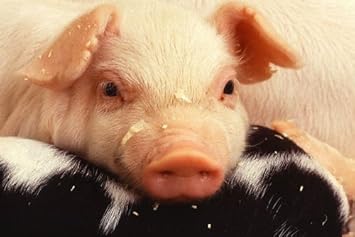 Veterinary researchers at the Virginia-Maryland Regional College of Veterinary Medicine have helped identify the origin of an emerging swine virus with high mortality rates that has spread to at least 17 U.S. states since it was first identified in May.
Veterinary researchers at the Virginia-Maryland Regional College of Veterinary Medicine have helped identify the origin of an emerging swine virus with high mortality rates that has spread to at least 17 U.S. states since it was first identified in May.A team of researchers led by Dr. X.J. Meng, University Distinguished Professor of Molecular Virology traced the likely origin of the emergent porcine epidemic diarrhea virus (PEDV) to a strain from the Anhui province in China.
“The virus typically only affects nursery pigs and has many similarities with transmissible gastroenteritis virus of swine,” said Meng. “There is currently no vaccine against porcine epidemic diarrhea virus in the United States. Although some vaccines are in use in Asia, we do not know whether they would work against the U.S. strains of the virus.”
The sudden emergence of porcine epidemic diarrhea virus, which belongs to the coronavirus family, has caused economic and public health concerns in the United States.
Ongoing outbreaks of Middle East respiratory syndrome coronavirus in humans from countries in or near the Arabian Peninsula and the historical deadly nature of the 2002 outbreaks of severe acute respiratory syndrome coronavirus make the emergence of PEDV in the United States a serious concern.
Researchers have found no evidence that the virus can spread to humans or pose a threat to food safety. They did, however, find evidence that the U.S. strains share several genetic features with a bat coronavirus — findings which point to an evolutionary origin from bats and the potential for cross-species transmission.
Though commonly accepted that the virus spreads through the fecal-oral route, scientists have not yet ruled out the possibility of other transmission routes. Symptoms include acute vomiting, anorexia, and watery diarrhea with high mortality rates in pigs less than 10 days old.
Sources: mBio, October 15, 2013. “Origin, Evolution, and Genotyping of Emergent Porcine Epidemic Diarrhea Virus Strains in the United States”
Virginia Tech News
Animal Husbandry and Livestock Books
Pet Supplies
Farm Supply
Farm Magazines
Artwork: Pig (Getting Cozy)










